Top Ten Tools for Reef Aquariums
Every reef keeper has their favorite tool, an item so indispensable that they just cold not go on reefing with out it. From the expensive and rare to the common and cheap, these things help reefers keep their tanks, and have earned a spot on our top ten list of tools for reef aquariums.
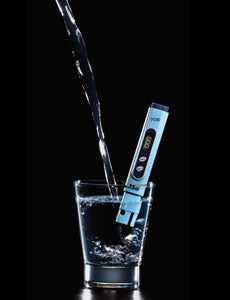 10. TDS Meter: TDS is short for Total Dissolved Solids and it refers to the amount of dissolved solids in the water. This handy little gadget lets you know that the water from your RO/DI system is safe to enter your tank or use for mixing saltwater.
10. TDS Meter: TDS is short for Total Dissolved Solids and it refers to the amount of dissolved solids in the water. This handy little gadget lets you know that the water from your RO/DI system is safe to enter your tank or use for mixing saltwater.
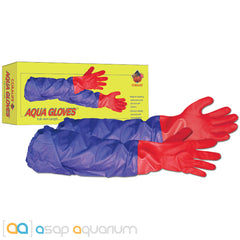 9. Rubber Gloves: These are an important safety item that every reef keeper should have. Millions of bacteria are swimming in your tank and living in your live rock. A good pair of rubber gloves can help prevent nasty bacterial infections from entering your skin through cuts and scrapes, saving you a trip to the emergency room and a small fortune in antibiotics. Nitrile gloves are also an excellent and inexpensive way to keep coral toxins and bristleworms from stinging you while fragging corals or working in your tank.
9. Rubber Gloves: These are an important safety item that every reef keeper should have. Millions of bacteria are swimming in your tank and living in your live rock. A good pair of rubber gloves can help prevent nasty bacterial infections from entering your skin through cuts and scrapes, saving you a trip to the emergency room and a small fortune in antibiotics. Nitrile gloves are also an excellent and inexpensive way to keep coral toxins and bristleworms from stinging you while fragging corals or working in your tank.
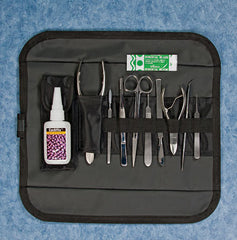 8. Fragging Tools: These tools allow reef hobbyists to perform a variety of tasks from mounting new frags and specimen, to propagating coral frags to swap or sell, to saving a sick or infected coral from certain death.
8. Fragging Tools: These tools allow reef hobbyists to perform a variety of tasks from mounting new frags and specimen, to propagating coral frags to swap or sell, to saving a sick or infected coral from certain death.
 7. Pipettes / Syringes: These can be used for everything from target feeding of corals, to treating aiptasia / mojano outbreaks, to target coral feedings, or even taking water samples for testing. They range in size from small and inexpensive, like the kind found in test kits, to large and pricey such as bulb syringes or the aptly named aquatic toolkit oddball the "Julian's Thing". Every reefer knows that having a variety of pipettes and syringes is a must.
7. Pipettes / Syringes: These can be used for everything from target feeding of corals, to treating aiptasia / mojano outbreaks, to target coral feedings, or even taking water samples for testing. They range in size from small and inexpensive, like the kind found in test kits, to large and pricey such as bulb syringes or the aptly named aquatic toolkit oddball the "Julian's Thing". Every reefer knows that having a variety of pipettes and syringes is a must.
 6. Scrapers / Brushes: Whether it's short or long handled, magnetic floating, manual or automated.... one thing all reefers can agree on is that a collection of good scrapers is essential to keeping your water flowing and tank looking great! There are a variety of different scrapers available for both glass and acrylic aquariums, and most aquarists have a collection of different scrapers, pads and brushes in their tool box.
6. Scrapers / Brushes: Whether it's short or long handled, magnetic floating, manual or automated.... one thing all reefers can agree on is that a collection of good scrapers is essential to keeping your water flowing and tank looking great! There are a variety of different scrapers available for both glass and acrylic aquariums, and most aquarists have a collection of different scrapers, pads and brushes in their tool box.
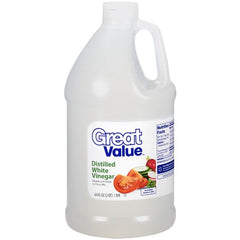 5. Distilled White Vinegar: The only thing easier than scraping of hard, crusted coralline algae from your tank, is watching it fall right off your pumps and equipment with a slight rinse! Soaking your pumps, heaters, filter parts and other removable aquarium parts in distilled white vinegar will allow you to easily remove crusty coralline algae build up with a simple brush and rinse. This allows you to make sure your equipment is running perfectly and unobstructed.
5. Distilled White Vinegar: The only thing easier than scraping of hard, crusted coralline algae from your tank, is watching it fall right off your pumps and equipment with a slight rinse! Soaking your pumps, heaters, filter parts and other removable aquarium parts in distilled white vinegar will allow you to easily remove crusty coralline algae build up with a simple brush and rinse. This allows you to make sure your equipment is running perfectly and unobstructed.
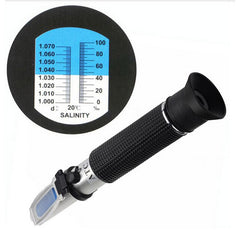 4. Salinity Refractometer: These are easy to use devices that will quickly tell you the salinity of your tank water as well as your salt mix water. A simple, accurate and cost effective way to know that your salinity is within spec.
4. Salinity Refractometer: These are easy to use devices that will quickly tell you the salinity of your tank water as well as your salt mix water. A simple, accurate and cost effective way to know that your salinity is within spec.
 3. Test Kits: Whether they are digital or manual, every reef aquarium owner needs to have a variety of test kits so they know what their water parameters are. Regular testing is an important part of this hobby and your aquarium live stock depends on you, the tank owner, to keep the water just right. For more advanced aquarists, the Triton Method of water testing is available which uses a high tech lab in Germany to blast your water at the atomic level, resulting in an extremely detailed report of your water parameters. Regardless of the testing option you choose, be sure your test kits are not expired to ensure that you are getting accurate results.
3. Test Kits: Whether they are digital or manual, every reef aquarium owner needs to have a variety of test kits so they know what their water parameters are. Regular testing is an important part of this hobby and your aquarium live stock depends on you, the tank owner, to keep the water just right. For more advanced aquarists, the Triton Method of water testing is available which uses a high tech lab in Germany to blast your water at the atomic level, resulting in an extremely detailed report of your water parameters. Regardless of the testing option you choose, be sure your test kits are not expired to ensure that you are getting accurate results.
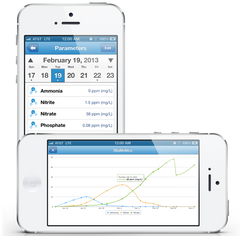 2. Water Parameter Log: Testing is great, but you need to know the overall stability of various water parameters and the uptake rates of major and minor trace elements in your reef tank over time. To do this, you must keep a log of your water parameter test results. This will give you a picture of your living tank and it's needs, and will allow you to make corrections as needed so you can attain tank stability.... otherwise known as "Reef Nirvana". You can use a variety of methods from an old school note pad and graphing paper, to a simple Excel spreadsheet. If you have a smart phone or tablet, there are a number of Apps that will allow you to record test results in your mobile device and transfer it to your computer for further analysis.
2. Water Parameter Log: Testing is great, but you need to know the overall stability of various water parameters and the uptake rates of major and minor trace elements in your reef tank over time. To do this, you must keep a log of your water parameter test results. This will give you a picture of your living tank and it's needs, and will allow you to make corrections as needed so you can attain tank stability.... otherwise known as "Reef Nirvana". You can use a variety of methods from an old school note pad and graphing paper, to a simple Excel spreadsheet. If you have a smart phone or tablet, there are a number of Apps that will allow you to record test results in your mobile device and transfer it to your computer for further analysis.
 1. Towels: These simple rags are inexpensive and come in at #1 for a good reason. They keep your hands and work space dry and mess free. They keep the salt creep off your tank, pumps and equipment, thus prolonging the life of your gear. And they are indispensable in the event of a leak or water emergency... they can save your carpeting or wood floors, your furniture, your marriage / relationship, and your sanity! Tank towels are fairly inexpensive and can be anything from old rags cut up from clothes, to inexpensive shop towels that can be purchased at the local home improvement store. Whatever you choose to use, make sure you have a stack of dry tank towels on hand at all times as they truly are the most important tools for your reef aquarium!
1. Towels: These simple rags are inexpensive and come in at #1 for a good reason. They keep your hands and work space dry and mess free. They keep the salt creep off your tank, pumps and equipment, thus prolonging the life of your gear. And they are indispensable in the event of a leak or water emergency... they can save your carpeting or wood floors, your furniture, your marriage / relationship, and your sanity! Tank towels are fairly inexpensive and can be anything from old rags cut up from clothes, to inexpensive shop towels that can be purchased at the local home improvement store. Whatever you choose to use, make sure you have a stack of dry tank towels on hand at all times as they truly are the most important tools for your reef aquarium!
